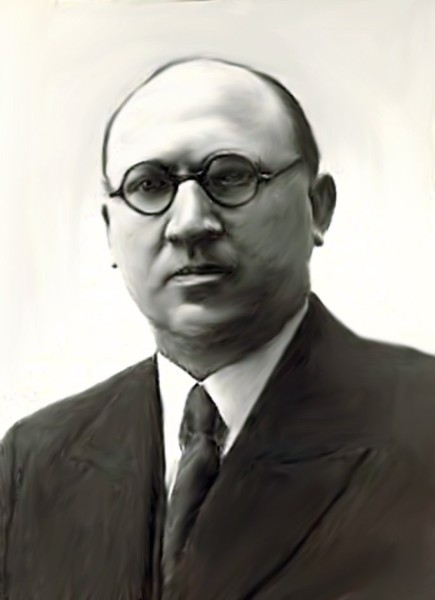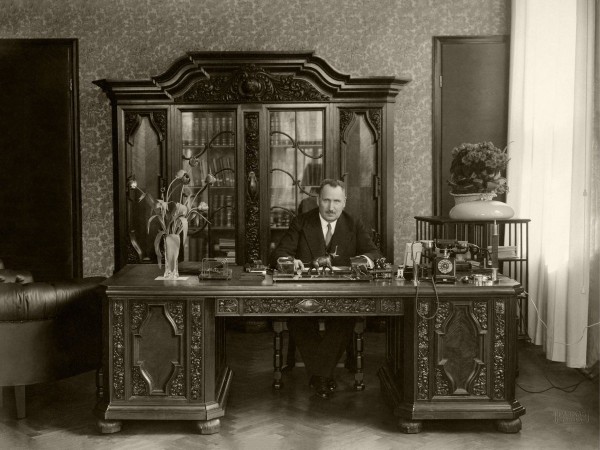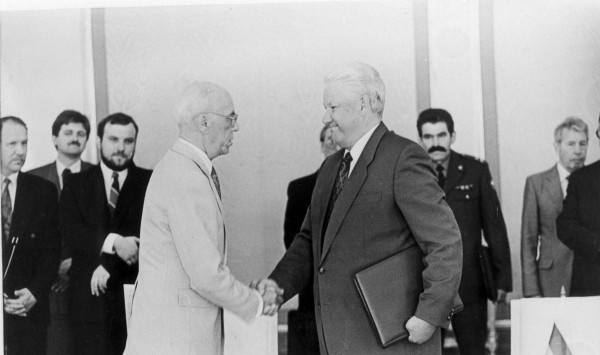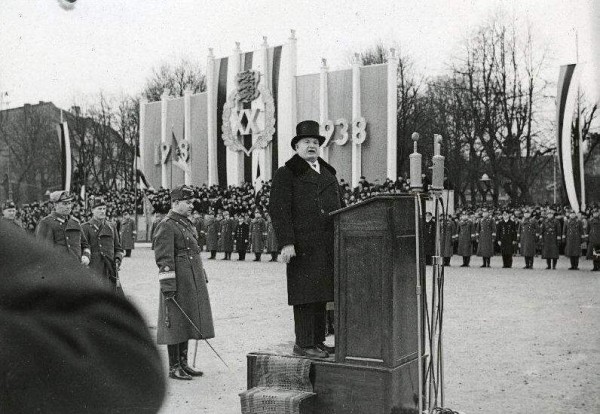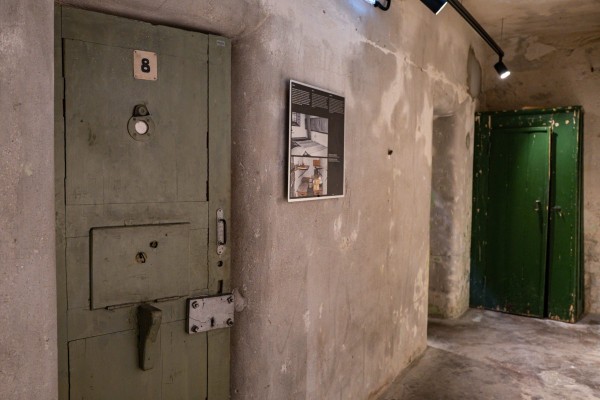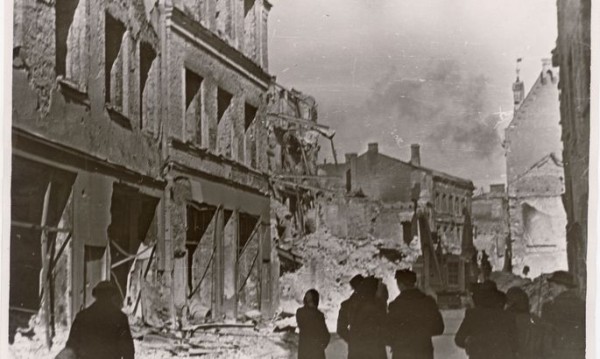Teenagers blow up soviet monument.

“How long should we have watched this red star, a memorial to the Russian looters, at a time when all our statues were being destroyed. We just couldn’t get our heads around it. We decided if such pillagers are raging in Estonia, they should see how one of their memorials gets blown up. We could have just doused the wooden thing with gasoline and set it on fire, but we wanted it to go with a bang.”
These are the reminiscences, some 60 years later, of Aili Jõgi (b. Jürgenson, 1931), who, as a school girl, on the night of May 8, 1946, along with her friend Ageeda Pavel, blew up a Soviet War memorial, the monument which preceded the “Bronze Soldier” that the government relocated to a cemetery in 2007.
After the re-occupation of Estonia in the fall of 1944, Soviet authorities began to systematically destroy the memorials to the fallen in the War of Independence that had survived the war itself. They were acts such as these and the brutality of arrests, deportations, executions that helped to strengthen the defiance of the Estonians.
Aili Jõgi: “When the Russians invaded we immediately started secret shooting practice. We didn’t have any problems with blowing up the monument. Explosives and weapons were everywhere in Estonia. During 1946 we remembered little of the peace. In the year, people were arrested every day. We had seen killings, searches, arrests. We saw the horrible conditions of the prisoners of war and brought them food. Nothing extraordinary in this.”
All students in Aili Jõgi’s class were totally opposed to the occupying Soviet regime. Without any formal organization a six-member group, that invited some boys to join, started distributing home-made flyers. A wreath was placed on the spot where the best known monument had been, a war memorial commemorating the death of school boys in the War of Independence. The monument had been destroyed by the Soviet authorities.
Advertisement / Reklaam
Advertisement / Reklaam
Somehow they heard that a seriously wounded resistance fighter was kept in the Tõnismäe hospital. The girls decided that he must be spirited away from that place. Aili Jõgi was convinced that their plan could have worked if only a co-operative and trusted doctor could be found. But where to find such a physician? For some reason they decided that only a young doctor would do. One of the girls said she knew of one. But one of them had a policeman as a boyfriend. Their plan was a non-starter. But they were able to take food to the starving prisoners of war in Kopli, Tallinn. Aili Jõgi walked by the Tõnismäe monument every day. Over time it got to be an odious monstrosity. It had to be destroyed!
Red Army soldiers had been robbing apartments in Tallinn. Three of them by mistake broke into the apartment of one of their own – a Red army officer and were caught. They were summarily shot by their political commissar. The Soviets decided to kill three birds with one stone – bury the three marauders and at the same time establish their monument as one commemorating their fallen dead during the war. The rebuilt wooden structure was eventually replaced nearby by the detested `Bronze Soldier` which was relocated in 2007 to a cemetery and which put the Kremlin into apoplexy who in turn `facilitated spontaneous` riots in Tallinn.
Aili Jõgi: ``Ìt was quite appropriate that the grave of marauders became a revered symbol of Soviet occupation. They pray and drink there – actually at the site where robbers are buried.``
Ageeda Pavel: “We had undertaken a dangerous goal. What to do about the police guard at the monument? Well, they weren’t especially attentive. We had to explode the monument before May 9th. We were hoping that the May 9 victory day would be celebrated without the monument. Vello Volt, thirteen at the time, collected ammunition and weapons during the war. He gave us three sticks of an explosive and a fuse that had to be long enough to allow us to walk away at a normal pace.” Things were made easier for us because the police on guard was flirting with a girl at some distance and didn’t notice us. Later she was also arrested suspected of being an accomplice, but later released.”
Advertisement / Reklaam
Advertisement / Reklaam
The demolition by the two girls was a not reported by the newspapers. The local authorities feverishly restored the monument by Victory Day in May. However most of the people of Tallinn were aware of the destruction of a hated symbol of Soviet power.Monuments in Rakvere and Tartu were similarly demolished. It was obvious that the girls’ accomplishment spurred others to act.
Following the explosion in Tallinn Aili Jõgi was not immediately suspected. and she continued with her classmates to distribute anti-Soviet flyers in support of the Estonian resistance. She was eventually arrested trying to procure a physician for a wounded member of the resistance who had been in a hidden bunker. It was during the interrogation of another resistance fighter that the blown up monuments was mentioned.
Aili spent her 15th birthday incarcerated at the infamous Pagari street MVD headquartes in Tallinn’s old town. The courts convicted her as an underage terrorist and sentenced her to a Gulag labor camp in the Komi-Zyryan region in the north-east of the European plain. She was forbidden to return to Estonia for eight years. She worked in a coal mine and later married Ülo Jõgi, an Estonian who had been convicted as a Finnish spy. He had been a member of the famous Erna group, who had been sent to Estonia from Finland, to gather strategic intelligence and mount armed diversions operations where necessary. He had been exiled from Estonia for life. They were allowed to return in 1970.
(A few years before the ‘ Bronze Soldier ‘ was relocated from Tõnismäe, this writer asked Aili Jõgi if she had ever encountered blowing up that Soviet monument. She said yes, that she had even consulted an expert who had advised her that it would take an enormous amount of explosives and that all the windows in the Tõnismäe area would be broken.)
Laas Leivat







